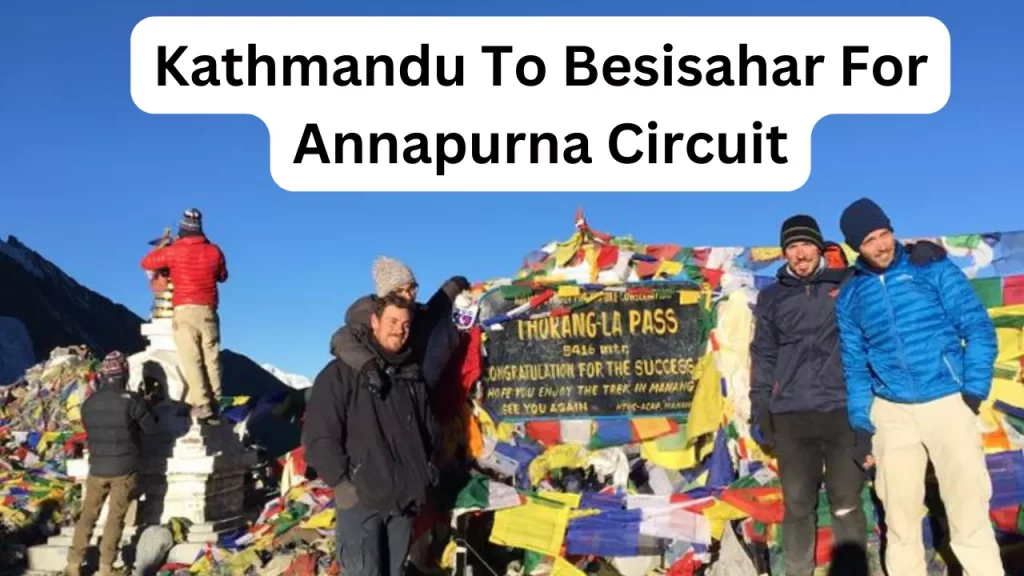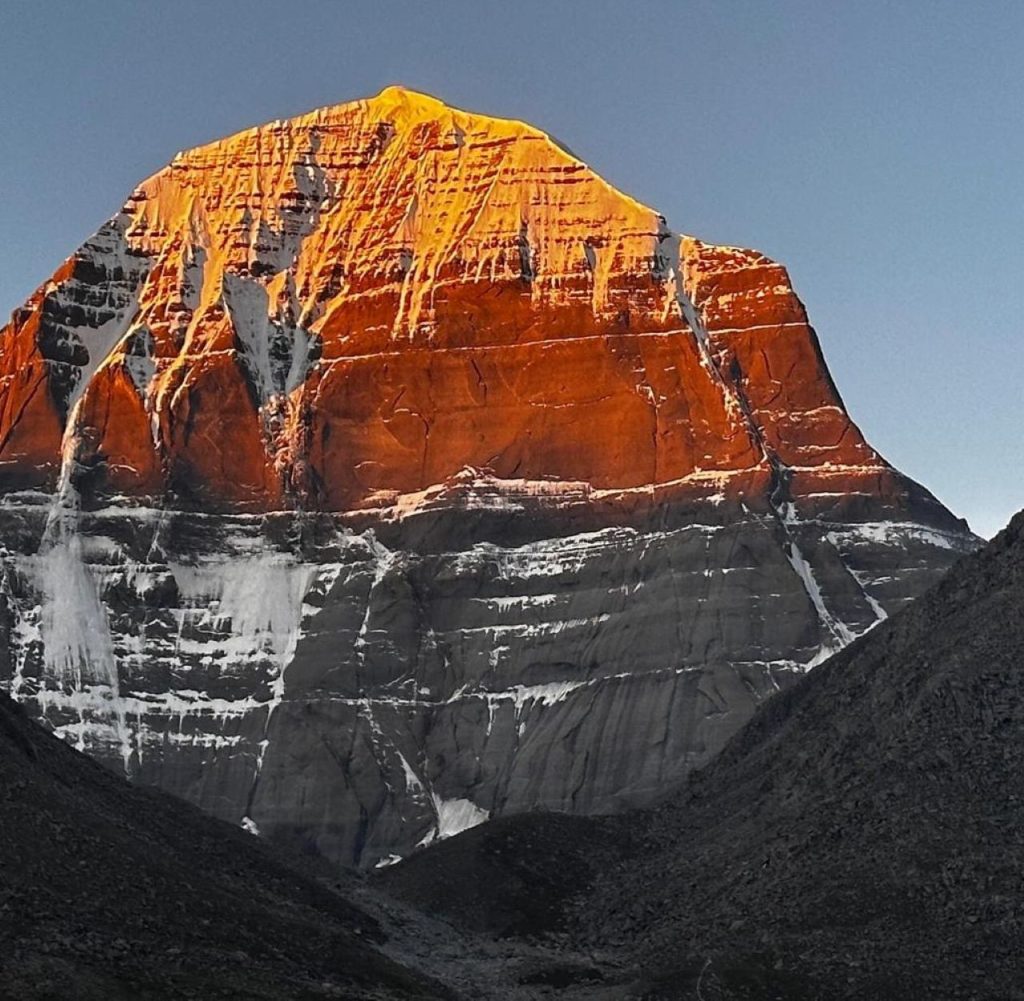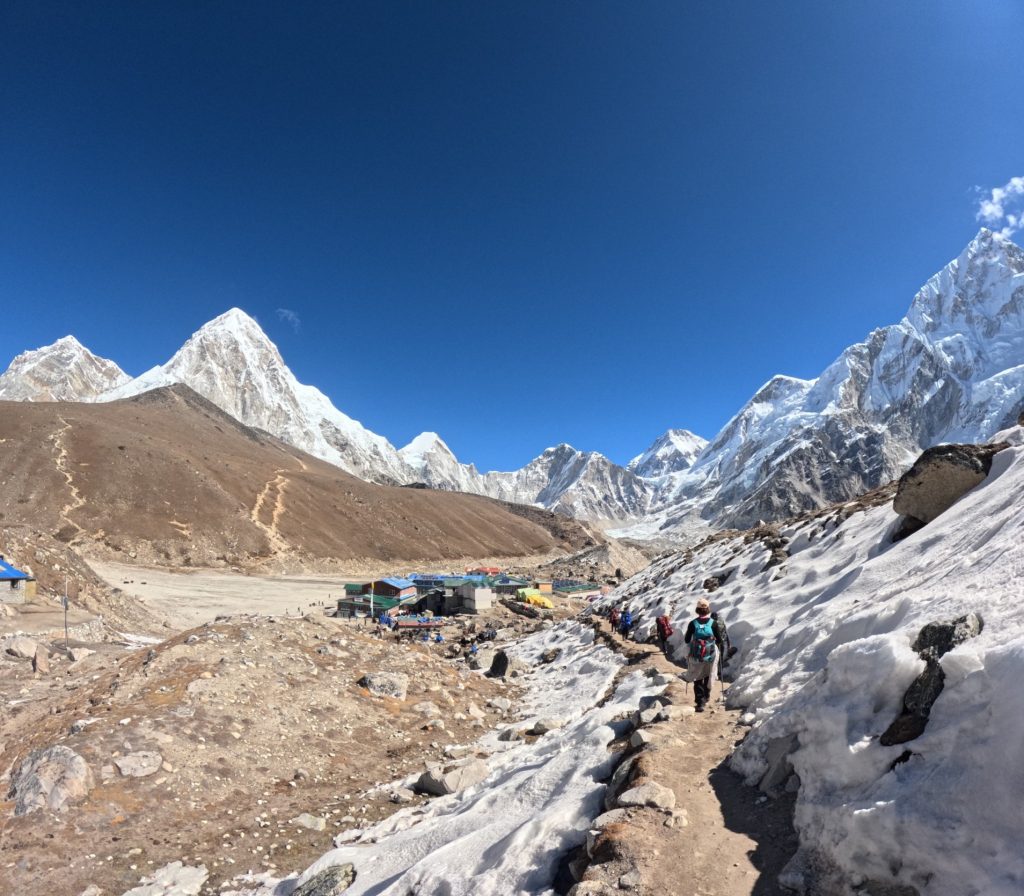Table of Contents
Introduction: The Ultimate Peak Climbing Experience in Nepal
Nepal, the land of the majestic Himalayas, is globally renowned as the ultimate destination for adventurers seeking the thrill of peak climbing. With eight of the world’s highest peaks, including Mount Everest, the country offers climbers a once-in-a-lifetime opportunity to ascend towering summits and experience the raw beauty of the mountains.
Whether you are a seasoned mountaineer or a novice seeking your first climbing adventure, peak climbing in Nepal provides a range of options for all skill levels.
At Third Eye Adventure, we specialize in organizing exceptional peak climbing expeditions, ensuring that climbers not only achieve their goals but do so in a safe, well-organized, and culturally enriching environment. With our years of expertise, we connect you to the essence of peak climbing in Nepal, where the mountains are more than just a challenge—they are a journey into the heart of the Himalayas.
Throughout this guide, we’ll explore the top peaks you can conquer, from technical expeditions like Ama Dablam to the beginner-friendly slopes of Yala Peak, and how Third Eye Adventure can make your peak climbing experience in Nepal unforgettable.
Why Choose Nepal for Peak Climbing?
When it comes to peak climbing in Nepal, the sheer diversity of peaks, coupled with the stunning landscapes and cultural richness, makes it an unrivaled destination for climbers worldwide.
From the towering heights of the Himalayas to the serene valleys, Nepal offers both technical challenges and accessible summits for climbers of all experience levels.
A Wide Range of Peaks for All Skill Levels
Whether you are an experienced climber seeking a technical challenge or a beginner looking for your first climb, Nepal has it all. Peaks like Ama Dablam and Lobuche East offer a more demanding ascent, requiring advanced skills and equipment, while others such as Yala Peak or Pisang Peak are perfect for those looking to start their mountaineering journey.
Unmatched Himalayan Views
Every climber in Nepal is rewarded with breathtaking views of the Himalayan range. Peaks like Mera Peak and Island Peak offer panoramic vistas of Everest, Lhotse, and Makalu, immersing you in the grandeur of the world’s highest mountains. The experience of standing atop these summits is truly unparalleled.
Cultural Enrichment
Nepal is not only known for its peaks but also its rich cultural heritage. While on your climbing journey, you’ll pass through traditional Sherpa villages, interact with the locals, and witness ancient monasteries and gompas, offering climbers a deep connection to the culture and spirituality of the region. This cultural immersion adds another layer of uniqueness to your peak climbing experience in Nepal.
At Third Eye Adventure, we ensure that every climbing expedition is more than just a physical challenge. We guide you through both the natural wonders and the cultural richness of Nepal, making every step of the journey unforgettable. Our extensive experience in organizing expeditions allows us to offer personalized itineraries that cater to your climbing goals while keeping safety and cultural appreciation at the forefront.
Top Peaks for Climbing in Nepal
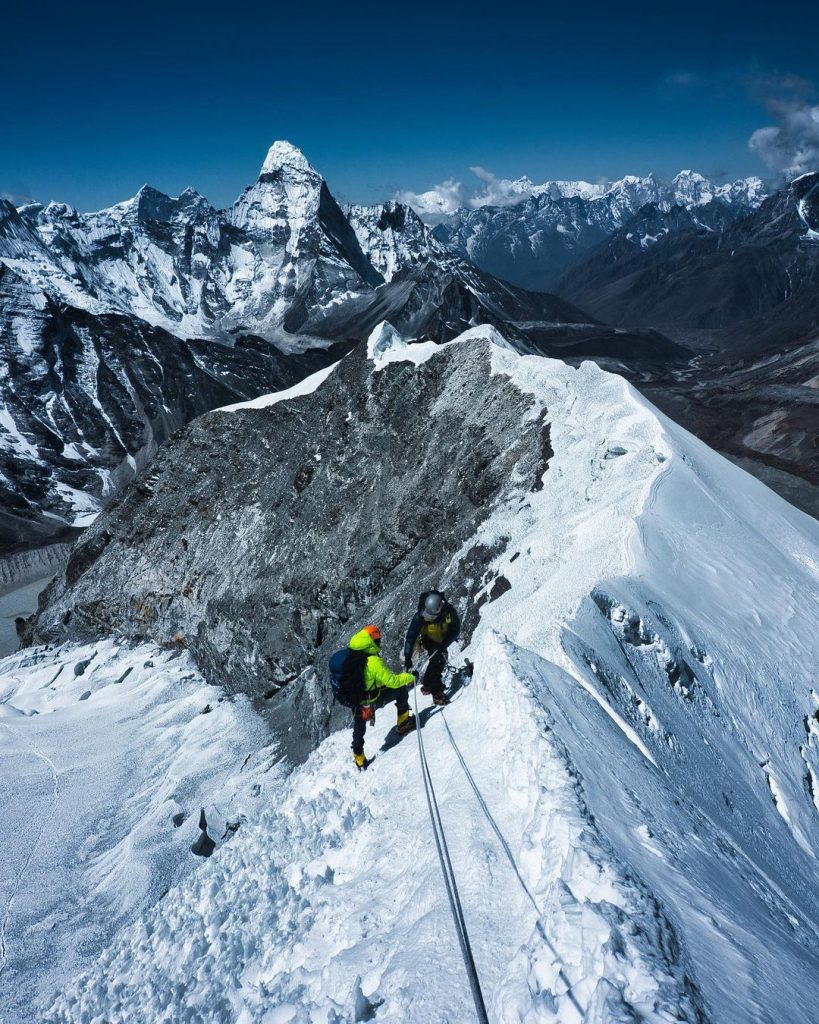
Nepal is home to some of the most stunning and challenging peaks in the world, attracting climbers from all over the globe. Each peak offers unique experiences and varying levels of difficulty, making it essential for climbers to choose the right one that aligns with their skills and ambitions. Here are some of the top peaks for climbing in Nepal, offered through Third Eye Adventure:
Himlung Expedition (28 Days)
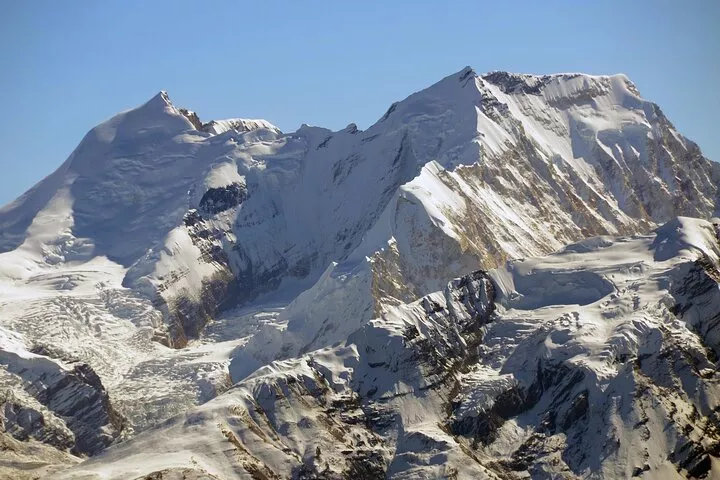
The Himlung Expedition is a thrilling journey that takes climbers to an elevation of 7,126 meters. Located in the remote region of Manaslu, this expedition combines cultural immersion with breathtaking views of the Annapurna range. The trek to the base camp offers an opportunity to explore traditional Tibetan villages, while the climb itself provides an exhilarating challenge suitable for experienced climbers.
Ama Dablam Expedition (36 Days)
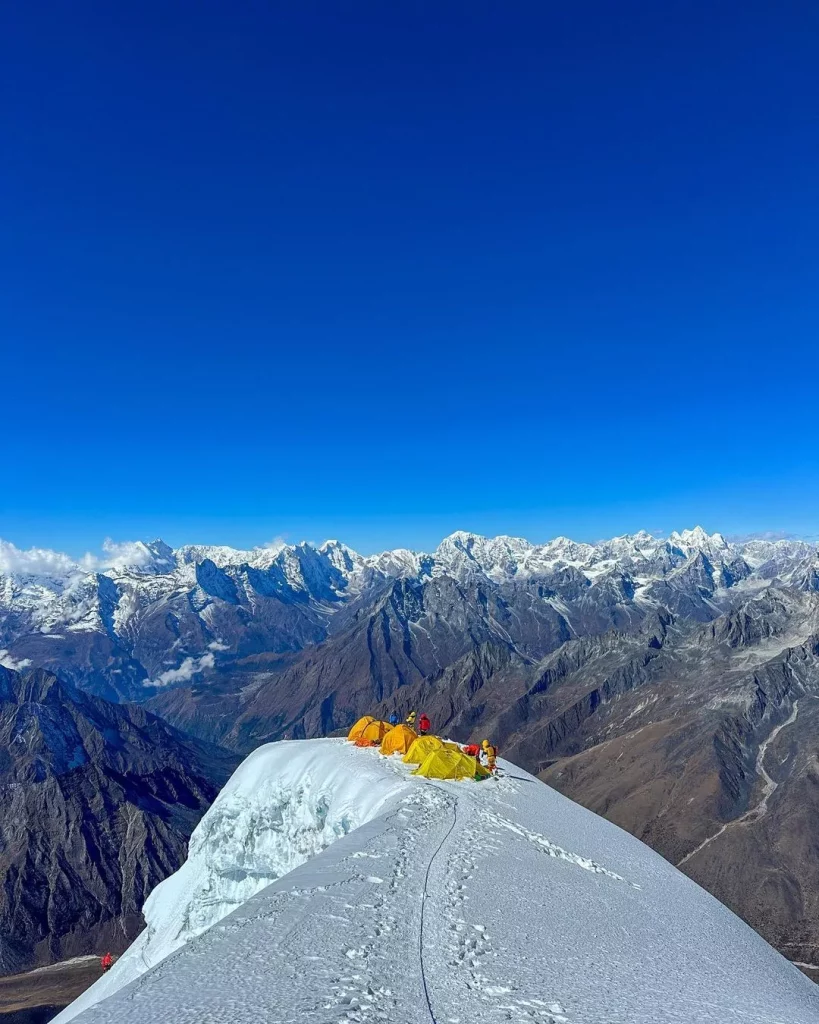
Known as the “Matterhorn of the Himalayas,” Ama Dablam is one of the most beautiful peaks in the world. Standing at 6,812 meters, this expedition is perfect for climbers looking to take on a technical challenge. The ascent features steep and exposed sections, but the stunning panoramic views from the summit make every effort worthwhile. Third Eye Adventure ensures a comprehensive training program to prepare climbers for this remarkable journey.
Naya Kanga Peak Climbing (22 Days)
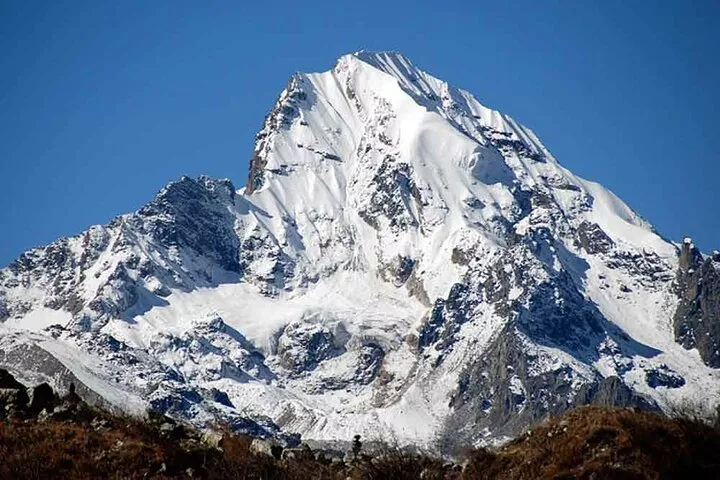
Naya Kanga (5,846 meters) offers a stunning yet less technical climb that is perfect for those looking to experience peak climbing for the first time. The trek to the base camp passes through beautiful landscapes and charming villages, and the summit rewards climbers with breathtaking views of the surrounding mountains. This is an excellent option for climbers wishing to build their skills in a supportive environment.
Tharpu Chuli Climbing (19 Days)
The Tharpu Chuli, also known as Tent Peak, stands at 5,663 meters and is an excellent choice for adventurous climbers seeking a shorter yet rewarding climb. The route is relatively straightforward, making it suitable for climbers of various skill levels. This peak offers fantastic views of the Annapurna range and is perfect for those looking to experience the thrill of summit success.
Lobuche East Peak Climbing (16 Days)
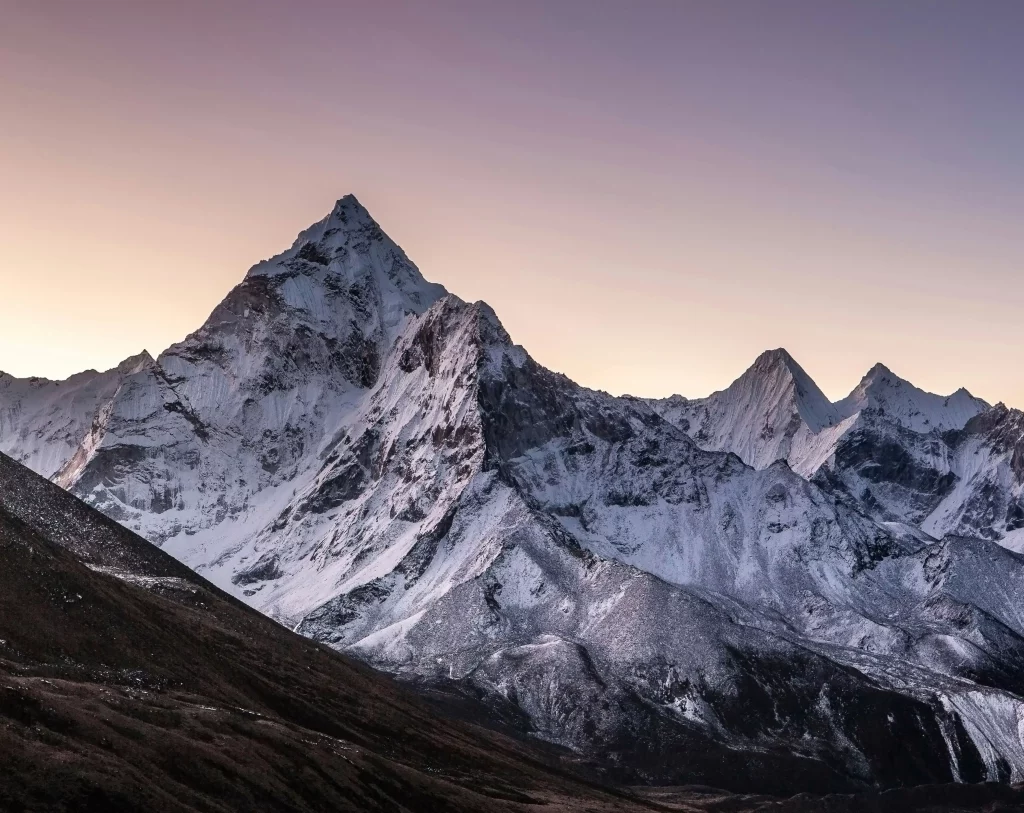
Reaching 6,119 meters, Lobuche East is a fantastic peak for climbers looking to enhance their skills in a beautiful alpine setting. The climb features some technical sections, making it an excellent preparation for those planning to tackle higher peaks like Ama Dablam. The breathtaking views from the summit are a highlight of this expedition, making it a favorite among climbers.
Chulu East Peak Climbing (14 Days)
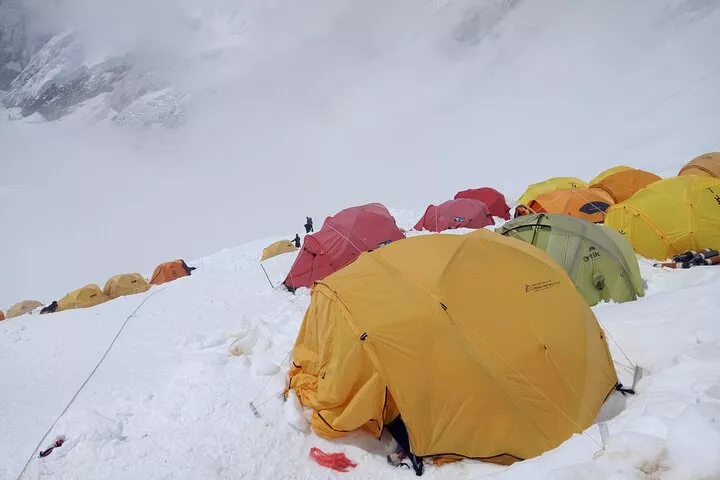
Chulu East (6,429 meters) is known for its stunning landscapes and relatively non-technical routes, making it a great choice for novice climbers looking to experience peak climbing in Nepal. The trek to the base camp showcases the beauty of the Manang region, and the summit offers breathtaking views of Annapurna and Manaslu.
Yala Peak Climbing (16 Days)
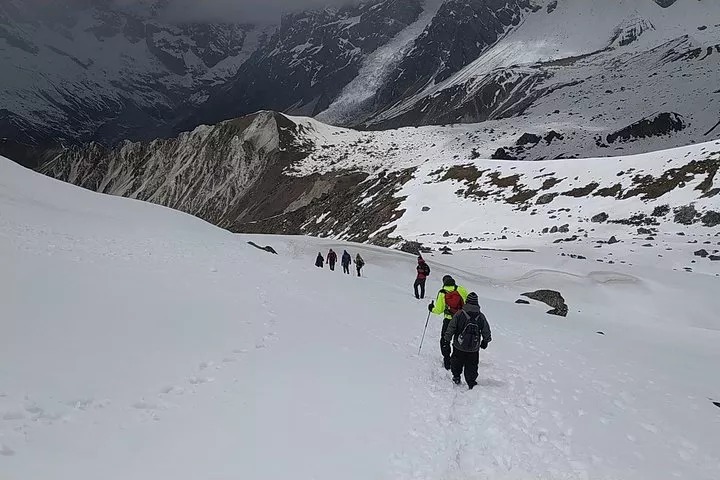
At 5,732 meters, Yala Peak is an ideal choice for beginner climbers seeking their first Himalayan summit. The journey begins with a scenic trek through the Langtang Valley, leading to an accessible summit that provides stunning views of the Langtang range. Third Eye Adventure ensures that every climber receives the necessary support to achieve their goals.
Pisang Peak Climbing (15 Days)
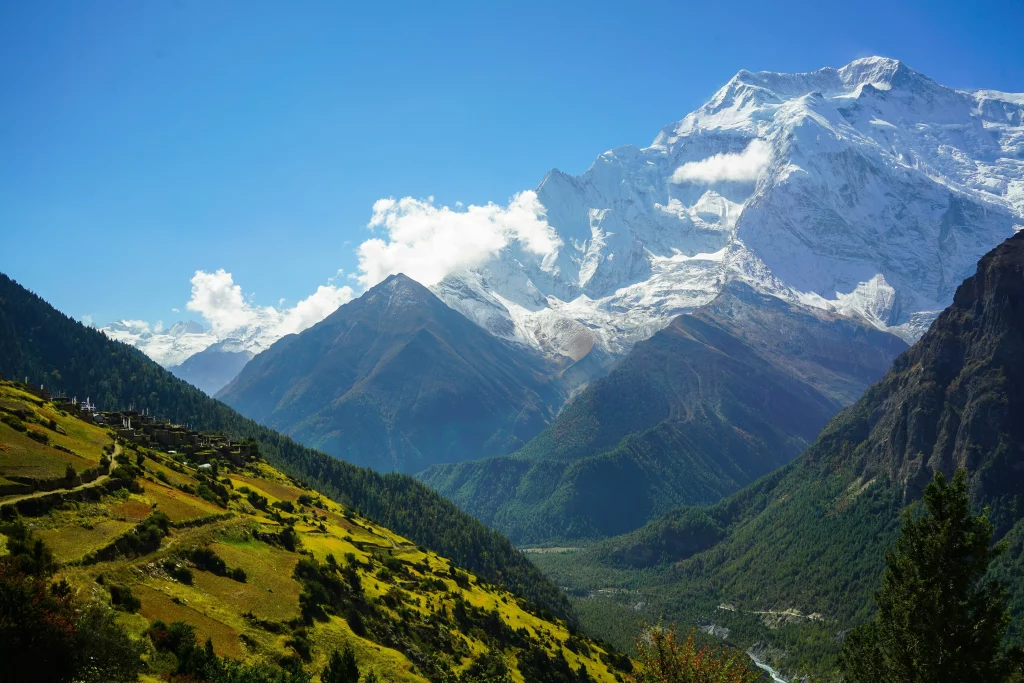
Pisang Peak (6,091 meters) offers a blend of trekking and climbing, making it a perfect option for those looking to transition from trekking to climbing. The ascent involves navigating diverse landscapes and provides climbers with an introduction to basic climbing techniques. The summit views are breathtaking, showcasing the Annapurna range in all its glory.
Island Peak Climbing (14 Days)
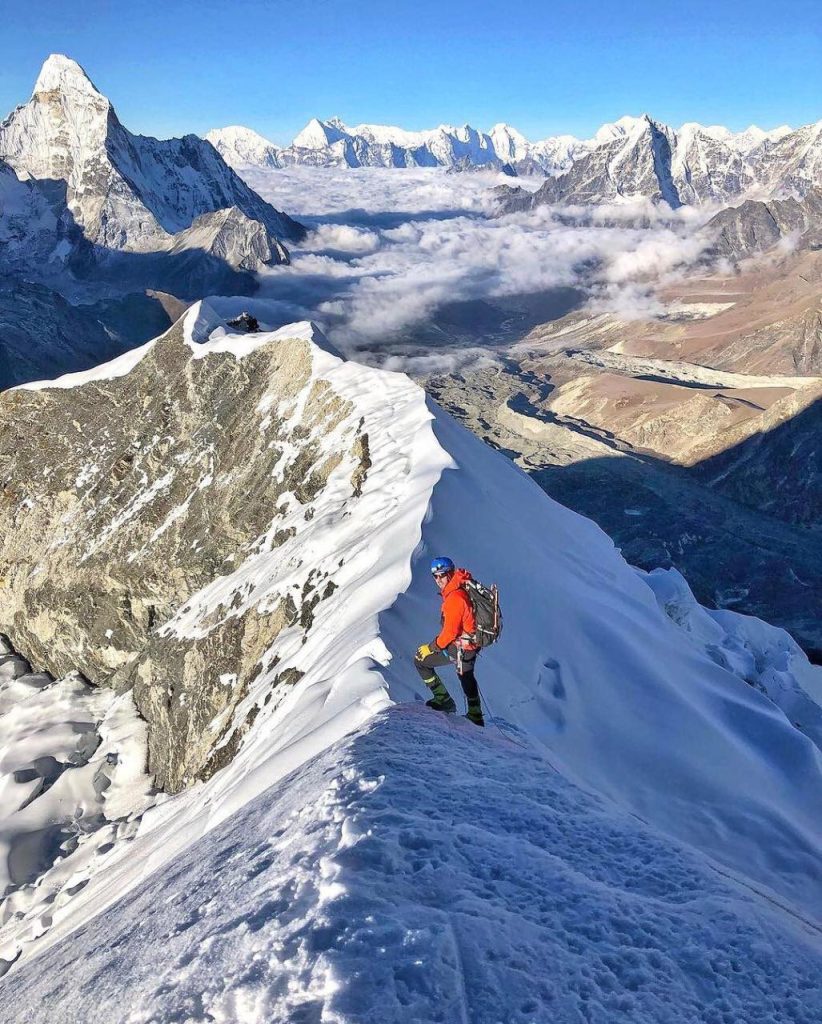
Island Peak (6,189 meters) is perhaps one of the most popular climbing peaks in Nepal, known for its relatively straightforward route and stunning views of Everest and Lhotse. It serves as an excellent introduction to peak climbing for beginners, with Third Eye Adventure providing comprehensive training and support to ensure climbers have a safe and enjoyable experience.
Chulu West Peak Climbing (18 Days)
Rising to 6,419 meters, Chulu West presents a more challenging ascent that rewards climbers with stunning views of the Dhaulagiri range. This expedition is ideal for those who have some prior climbing experience and are eager to take on a higher peak with unique challenges.
Mera Peak Climbing (14 Days)
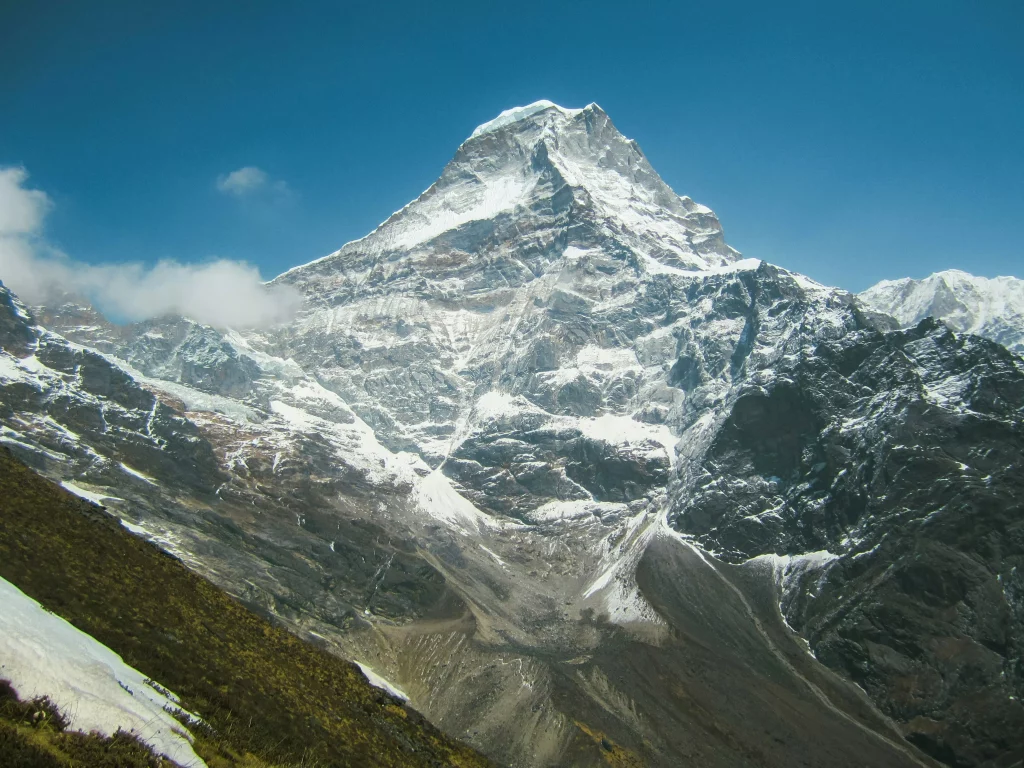
Mera Peak (6,476 meters) is often regarded as the highest trekking peak in Nepal. This expedition allows climbers to immerse themselves in the stunning landscapes of the Khumbu region while taking on a relatively straightforward climb. The summit views, which include Mount Everest, are unparalleled, making it a must for any climber’s bucket list.
At Third Eye Adventure, we are dedicated to ensuring that each climber is fully prepared for their chosen peak. From comprehensive training and support to a focus on safety, we strive to make your peak climbing adventure in Nepal an unforgettable experience.
Best Season for Peak Climbing in Nepal
Choosing the right season for peak climbing in Nepal is crucial for ensuring a safe and enjoyable experience. The optimal months for climbing are primarily in the spring and autumn, each offering unique weather conditions and advantages. Here’s a detailed overview of these seasons, their weather patterns, and a comparison to help you decide when to plan your climbing expedition with Third Eye Adventure.
Optimal Climbing Months
Spring (March to May)
Spring is considered the most popular season for peak climbing in Nepal. As the snow begins to melt, the weather becomes more stable, providing excellent climbing conditions. The average temperatures rise, making it comfortable for climbers to reach higher altitudes.
- Benefits:
- Stable Weather: The likelihood of clear skies and minimal rainfall is high during this season, reducing the chances of dangerous climbing conditions.
- Lively Landscape: Spring brings blooming rhododendrons and lush greenery to the trekking routes, enhancing the overall experience.
- Longer Days: Longer daylight hours allow for more time to acclimatize and summit safely.
Autumn (September to November)
Autumn is another favored season for peak climbing, particularly after the monsoon rains have subsided. The weather during this time is typically dry, with clear skies and stunning views of the surrounding mountains.
- Benefits:
- Clear Visibility: The dry weather results in crisp, clear views, making it an excellent time for photography and enjoying the stunning landscapes.
- Less Crowded: Compared to spring, autumn sees fewer climbers, allowing for a more peaceful experience on the trails and at base camps.
- Ideal Climbing Conditions: The temperatures are cooler, but not excessively so, creating a comfortable atmosphere for climbing.
Weather Conditions During Peak Climbing Seasons
- Spring:
- Temperature Range: Daytime temperatures can reach between 15°C to 25°C (59°F to 77°F) in lower regions, while higher altitudes can experience sub-zero temperatures.
- Precipitation: Minimal rain is expected, with occasional snow at higher elevations. This leads to optimal climbing conditions.
- Autumn:
- Temperature Range: Similar to spring, with daytime temperatures averaging between 10°C to 20°C (50°F to 68°F) in lower areas and cooler temperatures at higher altitudes.
- Precipitation: The monsoon season typically ends in early September, resulting in dry conditions for the remainder of autumn.
Comparison of Different Seasons and Their Pros/Cons
| Season | Pros | Cons |
| Spring | – Stable weather, longer days, blooming landscapes | – Higher number of climbers; potential for crowding |
| – Ideal for acclimatization and climbing | – Possible snow conditions at high altitudes | |
| Autumn | – Clear visibility, peaceful trekking | – Shorter days; cooler temperatures at night |
| – Less crowded, dry conditions | – Weather can be less predictable in late November |
Conclusion
Choosing between spring and autumn for your peak climbing adventure in Nepal depends on your preferences and climbing goals. Both seasons offer unique advantages that make them suitable for different types of climbers. At Third Eye Adventure, we provide tailored climbing expeditions to suit your needs, ensuring that you are well-prepared to conquer the peaks in the best possible conditions.
Peak Climbing Permits and Regulations
When embarking on a peak climbing adventure in Nepal, understanding the necessary permits and regulations is essential for a smooth and legal expedition. Third Eye Adventure ensures that you are well-informed about the required permits, associated costs, and guidelines to make your climbing experience as seamless as possible.
Overview of Required Permits
Trekking Peaks Permit:
- This permit is mandatory for climbers intending to ascend any of the trekking peaks classified under the Nepal Mountaineering Association (NMA). Peaks like Island Peak, Mera Peak, and Lobuche East require this permit to ensure the safety and organization of climbing activities.
NMA Permits:
- The Nepal Mountaineering Association issues additional permits for specific peaks. The NMA categorizes peaks into two groups:
- Group A: Higher peaks requiring special permits.
- Group B: Trekking peaks that are more accessible but still necessitate permits.
- Climbing peaks like Ama Dablam and Himlung also fall under NMA regulations, requiring separate permits.
Other Necessary Permits:
- Depending on the climbing route and region, you may also need permits for the National Park or Conservation Area you will be traversing, such as Sagarmatha National Park or Langtang National Park.
Costs, Processes, and Guidelines for Obtaining Permits
Costs:
Trekking Peaks Permit: The cost varies based on the peak and duration of stay, typically ranging from USD 20 to USD 100.
NMA Permits: Fees for NMA permits can also range from USD 70 to USD 350, depending on the peak’s classification and height.
National Park Permits: These permits generally cost around USD 30, depending on the park and duration.
Process:
Application Submission: Permits can be obtained through registered trekking agencies, such as Third Eye Adventure, or directly from the NMA office in Kathmandu.
Required Documentation: Typically, you will need:
- A completed application form.
- A copy of your passport.
- Two passport-sized photos.
- Payment receipt for the permit fees.
Processing Time: Permits can usually be obtained within a few days, but it’s advisable to apply well in advance, especially during peak seasons.
Rules and Regulations Set by the Nepal Mountaineering Association (NMA)
The NMA has established specific rules and regulations to ensure the safety of climbers and the preservation of the environment:
- Guided Expeditions: For most peaks, climbers must be part of a guided expedition led by a licensed guide or agency. This regulation ensures that climbers are adequately trained and informed about the risks involved.
- Environmental Responsibility: Climbers are expected to adhere to Leave No Trace principles, minimizing their impact on the environment. This includes proper waste disposal and respecting wildlife and natural habitats.
- Safety Protocols: It is crucial to follow safety guidelines and regulations set forth by the NMA. This includes using appropriate climbing gear, maintaining communication, and adhering to weather advisories.
Conclusion
Navigating the permits and regulations for peak climbing in Nepal is a critical step in ensuring a safe and compliant expedition. At Third Eye Adventure, we guide you through the entire process, ensuring that all necessary permits are acquired and that you are well-prepared to embark on your climbing journey. Our expertise in managing the logistics of peak climbing permits will allow you to focus on the adventure ahead.
Preparing for Your Peak Climbing Expedition
Embarking on a peak climbing expedition in Nepal requires thorough preparation to ensure a safe and successful adventure. At Third Eye Adventure, we believe that proper planning and preparation are vital for both novice and experienced climbers. This section outlines key aspects to consider as you gear up for your climbing journey.
Physical Conditioning and Training
Fitness Level: Peak climbing demands a good level of physical fitness. To prepare adequately:
- Endurance Training: Engage in activities like hiking, running, or cycling to build cardiovascular endurance.
- Strength Training: Focus on building core, leg, and upper body strength through weight training or bodyweight exercises.
- Altitude Acclimatization: If possible, train at higher altitudes to help your body adapt to reduced oxygen levels.
Climbing Skills: Familiarize yourself with basic climbing techniques:
- Rope Handling: Learn how to tie essential knots and use climbing gear correctly.
- Navigation Skills: Practice map reading and understanding compass use to navigate the mountainous terrain confidently.
Essential Gear and Equipment
Choosing the right gear is crucial for comfort and safety during your expedition. Here’s a list of essential items:
Climbing Equipment:
- Crampons: Essential for icy terrains.
- Ice Axes: Useful for ascending and descending steep slopes.
- Harness and Ropes: Make sure to have high-quality climbing harnesses and dynamic ropes.
Clothing:
- Layered Clothing System: Invest in moisture-wicking base layers, insulating mid-layers, and waterproof outer layers to handle varying weather conditions.
- Footwear: Select sturdy, well-fitting mountaineering boots that are suitable for the type of climbing you will undertake.
Camping Gear:
- Tent: A lightweight, weather-resistant tent is vital for shelter during the expedition.
- Sleeping Bag: Opt for a sleeping bag rated for the temperatures you expect to encounter.
- Cooking Equipment: Portable stoves and cooking gear are essential for meal preparation on the go.
Mental Preparation and Team Dynamics
Mental Conditioning: Peak climbing can be mentally challenging. Engage in activities that improve your focus, resilience, and mental toughness, such as meditation or visualization techniques.
Team Dynamics: If you’re climbing with a group, fostering positive team dynamics is crucial:
- Communication: Open lines of communication help in addressing any concerns and fostering teamwork.
- Roles and Responsibilities: Clearly define each member’s role within the team to ensure efficient operations during the expedition.
Nutrition and Hydration
Diet: Proper nutrition fuels your body for the challenges ahead. Focus on:
- High-Calorie Foods: Incorporate energy-dense foods like nuts, energy bars, and dried fruits.
- Balanced Meals: Ensure your diet includes carbohydrates, proteins, and fats to maintain energy levels.
Hydration: Staying hydrated is vital for peak performance. Carry a water purification system or tablets to ensure access to safe drinking water throughout your climb.
Logistical Arrangements with Third Eye Adventure
At Third Eye Adventure, we provide comprehensive support for your peak climbing expedition:
- Transportation: We assist with arranging transportation to and from the trekking trailheads.
- Accommodation: Enjoy comfortable lodging options before and after your climb, ensuring a restful experience.
- Guided Support: Our experienced guides are here to assist you every step of the way, from preparing your gear to navigating the peaks.
Conclusion
Preparing for a peak climbing expedition in Nepal involves thorough physical training, selecting the right gear, and ensuring mental readiness. At Third Eye Adventure, we’re dedicated to helping you prepare effectively so that you can focus on the breathtaking experiences and challenges that await you in the majestic Himalayas.
Logistics: Planning Your Peak Climbing Trip
Planning a peak climbing trip in Nepal involves careful consideration of various logistical aspects to ensure a smooth and enjoyable experience. At Third Eye Adventure, we understand that the right planning can significantly enhance your climbing journey. This section provides insights into choosing the right trekking agency, understanding costs, and securing accommodations and travel insurance.
Choosing the Right Trekking Agency and Guide
Research Agencies: Selecting a reputable trekking agency is crucial for a successful expedition. Look for agencies with:
- Positive Reviews: Check online platforms for testimonials and reviews from previous climbers.
- Experience: Opt for agencies with a proven track record in organizing peak climbing expeditions.
Qualified Guides: The expertise of your guide can greatly impact your climbing experience:
- Certification and Training: Ensure that your guide is certified by recognized bodies and has experience in peak climbing.
- Local Knowledge: A local guide will provide invaluable insights about the terrain, culture, and safety precautions.
Safety Protocols: Inquire about the agency’s safety protocols and emergency procedures, including first aid training for guides and access to communication devices.
Cost Breakdown for the Expedition
Understanding the costs involved in peak climbing expeditions is essential for budgeting your trip. Here’s a breakdown of typical expenses:
Permits:
- Trekking Peaks Permit: Required for most climbing activities. Fees vary depending on the peak.
- NMA Permits: Additional permits may be necessary for specific peaks, contributing to overall costs.
Guides and Porters:
- Guide Fees: Professional guides typically charge a daily rate, which varies based on their experience and the duration of the trip.
- Porter Fees: Hiring porters can help carry your gear, alleviating physical strain.
Insurance:
- Travel Insurance: Essential for covering medical emergencies, trip cancellations, and evacuation costs. Ensure your policy covers high-altitude climbing.
Gear and Equipment:
- Rental vs. Purchase: Decide whether to rent or purchase climbing gear based on your budget and frequency of use.
- Climbing Equipment Costs: Budget for necessary gear like crampons, ice axes, and climbing ropes.
Miscellaneous Costs:
- Food and Accommodation: Factor in daily expenses for meals and lodging along the trekking route.
- Tipping: Consider customary tips for guides and porters at the end of the expedition.
Tips on Accommodations, Guides, and Travel Insurance
Accommodations:
- Lodging Options: Research accommodations in the starting city (like Kathmandu) and along the trekking route. Options range from budget guesthouses to luxurious lodges.
- Pre-Booking: Consider pre-booking your accommodations, especially during peak climbing seasons to secure the best options.
Guides:
- Personal Connection: Establish a rapport with your guide before the trip. A comfortable working relationship can enhance your climbing experience.
- Clear Expectations: Discuss expectations and responsibilities upfront to ensure a smooth partnership during the expedition.
Travel Insurance:
- Comprehensive Coverage: Opt for a policy that includes medical evacuation, trip interruption, and high-altitude climbing coverage.
- Review Policy Details: Thoroughly review the policy to understand exclusions and ensure it meets your climbing needs.
Conclusion
Effective logistical planning is vital for a successful peak climbing expedition in Nepal. By choosing the right trekking agency, understanding the cost breakdown, and securing accommodations and travel insurance, you can focus on the adventure that awaits you. At Third Eye Adventure, we are committed to providing you with the necessary support and guidance throughout your climbing journey, ensuring a memorable experience in the stunning Himalayan landscape.
Safety Tips for Climbing Peaks in Nepal
Safety is paramount when embarking on a peak climbing adventure in Nepal’s majestic Himalayas. While the breathtaking scenery and exhilarating challenges draw adventurers from around the globe, ensuring your safety and well-being during the climb is crucial. At Third Eye Adventure, we prioritize safety and provide essential tips to help you navigate your peak climbing journey with confidence.
The Importance of Climbing with Experienced Guides
Expertise in High-Altitude Climbing:
Experienced guides are well-versed in the challenges posed by high-altitude environments. They understand the unique dynamics of climbing, including acclimatization techniques and altitude sickness prevention.
Navigational Skills:
Knowledgeable guides possess an intimate understanding of the terrain, ensuring safe navigation through rugged paths and unpredictable weather conditions.
Decision-Making Abilities:
An experienced guide can make critical decisions in response to changing weather, personal health, and other unforeseen circumstances, keeping the group safe.
Local Knowledge:
Guides familiar with the region can enhance your experience by sharing cultural insights and local history, enriching your journey beyond just climbing.
Basic Safety Protocols for High-Altitude Climbing
Acclimatization:
- Ascend gradually to allow your body to adjust to higher elevations. Follow a planned acclimatization schedule, including rest days at strategic points.
Stay Hydrated:
- Dehydration can lead to altitude sickness. Drink plenty of water and electrolyte-rich fluids throughout the climb to maintain hydration.
Monitor Health:
- Be vigilant about your physical condition and watch for signs of altitude sickness, such as headache, nausea, and dizziness. Inform your guide immediately if you experience any symptoms.
Proper Gear:
- Use appropriate climbing gear, including helmets, harnesses, and specialized footwear. Ensure that all equipment is well-maintained and suited for the specific climbing conditions.
Climbing Techniques:
- Learn basic climbing techniques and safety practices before your expedition. Understanding how to use climbing tools properly can prevent accidents and improve your efficiency.
Emergency Procedures and Evacuation Options
Emergency Plans:
- Ensure your trekking agency has a well-defined emergency response plan. Familiarize yourself with this plan before your climb, including evacuation routes and communication procedures.
Communication Devices:
- Carry reliable communication devices, such as satellite phones or walkie-talkies, to stay connected with your team and call for help if needed.
Emergency Contacts:
- Maintain a list of emergency contacts, including local rescue services and your trekking agency’s emergency hotline. This information can be vital in urgent situations.
Health Insurance:
- Verify that your travel insurance covers emergency evacuation costs. Having proper insurance will ease the financial burden in case of an emergency.
First Aid Knowledge:
- Basic first aid knowledge can be invaluable. Familiarize yourself with common injuries and how to address them until professional help arrives.
Conclusion
Climbing peaks in Nepal is an extraordinary adventure, but safety should always be your top priority. By climbing with experienced guides, adhering to basic safety protocols, and understanding emergency procedures, you can ensure a safe and memorable experience in the breathtaking Himalayas. At Third Eye Adventure, we are dedicated to providing you with the safest climbing experience possible, allowing you to focus on conquering the majestic peaks of Nepal.
Conclusion
Nepal is undeniably the ultimate destination for peak climbing enthusiasts, offering a blend of breathtaking landscapes, diverse terrains, and a rich tapestry of cultural experiences. From the towering heights of Mount Everest to the serene trails leading to Mera Peak, the opportunities for adventure are as vast as the Himalayan range itself.
As you contemplate your next climbing expedition, consider the incredible peaks that await your ascent:
- Himlung Expedition: An exhilarating 28-day journey through remote landscapes.
- Ama Dablam Expedition: A 36-day climb that promises unforgettable views and challenging terrains.
- Naya Kanga Peak: A stunning 22-day ascent perfect for climbers seeking a blend of adventure and beauty.
- Lobuche East and Island Peak: Shorter, yet equally rewarding climbs for those eager to reach new heights.
With Third Eye Adventure, you can turn your dream of climbing in Nepal into a reality. We specialize in tailored peak climbing experiences, ensuring you receive the best guidance, support, and safety protocols throughout your journey.
So, what are you waiting for? Your next adventure in the heart of the Himalayas is just a step away. Reach out to us today for more information or to start planning your climb. Let Third Eye Adventure help you conquer the peaks of Nepal and create memories that will last a lifetime!
Conclusion: Your Next Adventure Awaits in Nepal
Nepal is undeniably the ultimate destination for peak climbing enthusiasts. With its breathtaking landscapes, diverse climbing options, and rich cultural experiences, it offers an unparalleled adventure that every climber dreams of. Whether you’re standing atop Mera Peak, experiencing the stunning views from Island Peak, or conquering the challenges of Ama Dablam, every ascent in Nepal is a journey filled with excitement and discovery.
At Third Eye Adventure, we are dedicated to providing you with the best climbing experiences tailored to your unique interests and skill levels. Our experienced guides and well-planned itineraries ensure that your expedition is not only safe but also memorable.
Ready to Start Your Climbing Journey?
Reach out to us today to learn more about our peak climbing packages, get assistance with planning your itinerary, or ask any questions you may have. Let us help you turn your climbing dreams into reality. Contact us now to begin your adventure in the majestic Himalayas of Nepal!
FAQs about Peak Climbing in Nepal
What is peak climbing in Nepal?
Peak climbing in Nepal refers to the adventure of ascending various trekking peaks, which are technically less challenging than the major Himalayan mountains. These peaks provide climbers with the opportunity to experience high-altitude climbing in a more accessible manner.
Do I need a permit for peak climbing in Nepal?
Yes, climbers need to obtain specific permits for peak climbing. This typically includes the Trekking Peaks Permit from the Nepal Mountaineering Association (NMA) and other permits depending on the region and peak you are climbing.
What are the best seasons for peak climbing in Nepal?
The optimal months for peak climbing are during Spring (March to May) and Autumn (September to November). These seasons offer stable weather conditions, making climbs safer and more enjoyable.
Is prior climbing experience necessary for peak climbing in Nepal?
While some peaks require basic climbing skills, many trekking peaks can be climbed with minimal experience. However, it is advisable to undertake some training and gain physical fitness before attempting any climb.
What are the most popular peaks for climbing in Nepal?
Some of the most popular peaks include Island Peak, Mera Peak, Lobuche East, Ama Dablam, and Yala Peak. Each offers unique experiences and stunning views of the Himalayas.
How much does a peak climbing expedition cost?
Costs can vary significantly based on the peak, duration of the climb, and services included. On average, expect to spend between $1,500 to $5,000, which includes permits, guides, accommodations, and equipment.
What gear do I need for peak climbing in Nepal?
Essential gear includes climbing boots, crampons, ice axes, a sleeping bag rated for cold weather, and appropriate clothing. It’s important to have reliable equipment to ensure safety and comfort during your expedition.
How can I choose a reputable trekking agency for peak climbing?
Research agencies that have strong reviews, experienced guides, and good safety records. Look for agencies that provide clear information about itineraries, costs, and what’s included in the packages.
What should I do if I encounter altitude sickness?
If you experience symptoms of altitude sickness, it’s essential to descend to a lower altitude immediately and seek medical attention. Listening to your body and acclimatizing properly during the ascent can help prevent altitude-related issues.
Can I arrange a custom peak climbing itinerary with Third Eye Adventure?
Absolutely! Third Eye Adventure specializes in creating customized climbing itineraries tailored to your experience level, interests, and desired peaks. Contact us to discuss your preferences, and we’ll help you plan the perfect adventure in Nepal.


